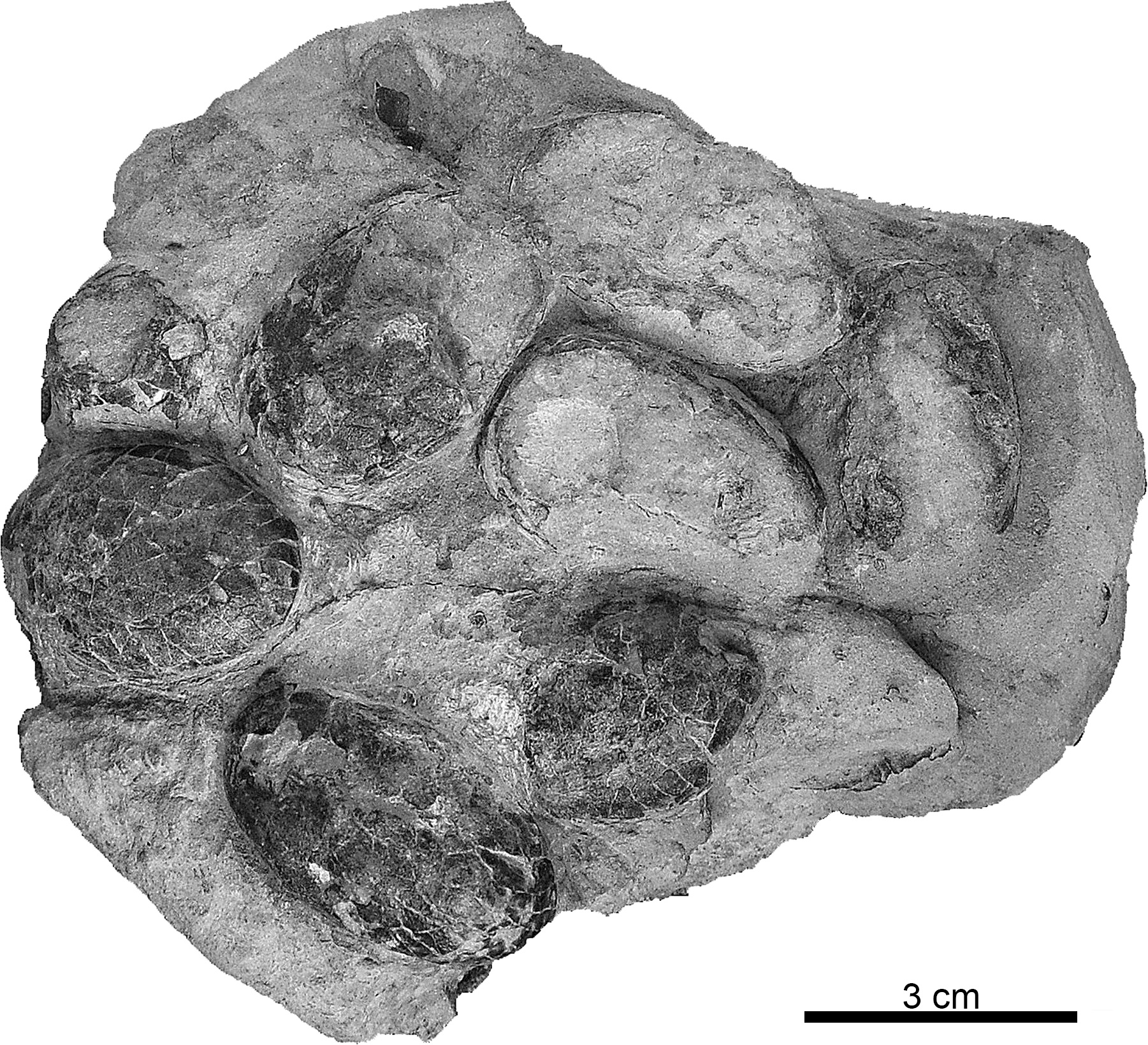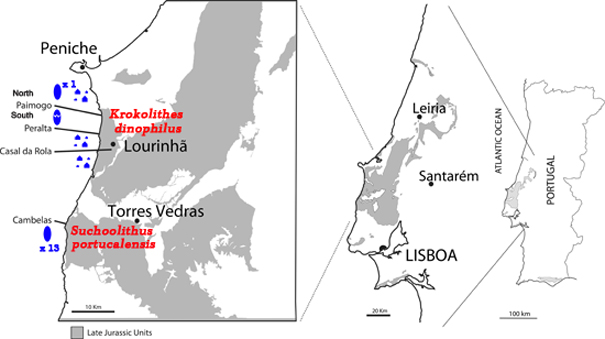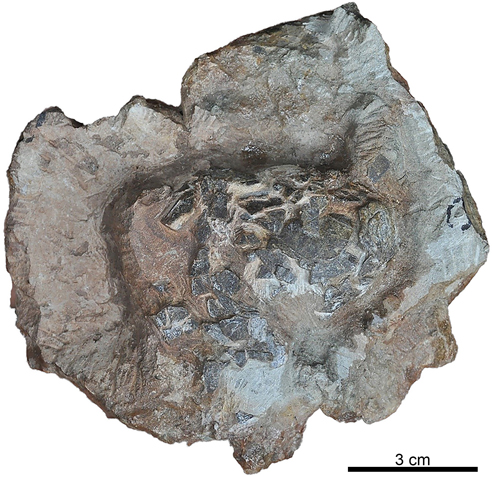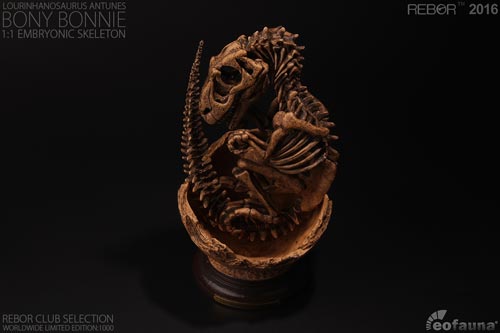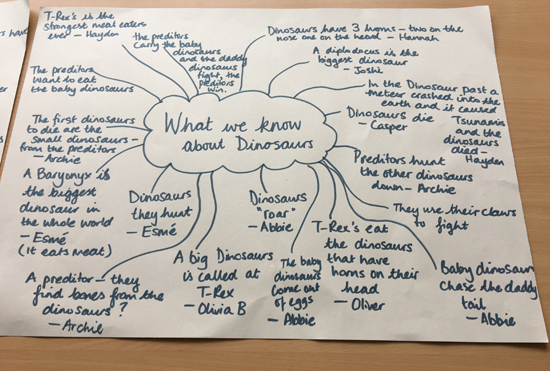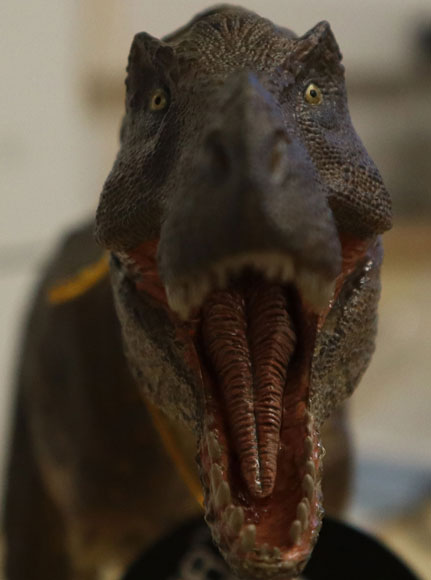Amazing Late Jurassic Crocodile Eggs and Meat-Eating Dinosaurs
Crocodylomorph Ootaxa and the Theropod Connection
A number of media outlets have reported upon a paper published in the on line journal PLOS One which describes two new ootaxa (the name given to a species described just from egg fossils), of crocodilians from the Upper Jurassic rocks of western Portugal. The focus on many of these reports has been on the age of the fossilised crocodile eggs. Having been laid more than 150 million years ago, they are the oldest crocodilian eggs described to date. However, the research paper itself, hints at a remarkable potential relationship between these ancient reptiles and their close cousins, theropod dinosaurs.
A Clutch of Unhatched Late Jurassic Crocodylomorph Eggs (Lourinhã Formation)
The Famous Lourinhã Formation
The first crocodylomorph eggs were found in 1987 and over the years a number of egg and eggshell fragment discoveries have been made. The eggs are very similar to the eggs of extant crocodiles but the scientists have been able to identity distinctions between the fossil specimens (not least the size). This has led to the erection of two new ootaxa. The eggs of the smaller of the two crocodylomorphs – Suchoolithus portucalensis are shown in the photograph above. The eggs are quite small and the researchers estimate that the adult female that laid these eggs would have been around seventy centimetres in length.
The second ootaxa to be named – Krokolithes dinophilus, which is known from a number of fossil specimens collected from four locations, is represented by larger but broken eggs and shell fragments. The research team estimate that the female croc that laid these eggs would have been around the size of a female American Alligator (A. mississippiensis), probably more than two metres long.
Location of the Egg Fossil Finds Referred to in the New Study
Picture credit: PLOS One with additional annotation from Everything Dinosaur
Key
The picture above shows the five fossil locations that are covered in the scientific paper as well as indicating the position of the Lourinhã Formation in relation to the rest of Portugal. A total of thirteen fossilised eggs collected at the Cambelas site have been ascribed to the ootaxa Suchoolithus portucalensis (the name translates from Latin as “egg stone crocodile from Portugal”), the fossils represent a clutch of unhatched eggs.
Larger Crocodylomorph Eggs
Eggs laid by a much larger crocodylomorph are associated with the other four locations, namely North and South Paimogo, Casal da Rola and Peralta. These fossils comprise broken eggs and numerous shell fragments, they have been ascribed to the ootaxa Krokolithes dinophilus (which is from the Greek and means “crocodile eggs found in association with dinosaurs”).
Holotype of Krokolithes dinophilus (Specimen Number ML760 from Paimogo N, Praia da Amoreira-Porto Novo Member, Lourinhã Formation)
Found in Association with Theropod Dinosaur Nests
All the egg fossils (except for the Cambelas site fossils), were found in association with theropod dinosaur nests and eggs. So in essence, the palaeontologists, which included João Russo and Octávio Mateus (Museu da Lourinhã, Portugal), have identified four occurrences where the fossils of the large crocodylomorph K. dinophilus are found in the same place as the eggs and nests of large, meat-eating dinosaurs. This could suggest some sort of biological relationship between the crocodiles and the theropods.
Theropod Dinosaurs and Crocodilians – A Symbiotic Relationship?
This is certainly an intriguing thought and there are no parallels that can be drawn between this idea and the behaviour of modern crocodiles. Extant crocodilians tend to lay eggs in relatively secluded places and a parent (usually the female), will stand guard helping to protect the nest and the subsequent hatchlings from predators.
It can be speculated that these prehistoric crocodiles preferred to nest in close proximity to large meat-eating dinosaurs as perhaps the presence of two different types of large predator helped to protect all the nests from potential danger. With so many threats to eggs and recently hatched animals around in the Late Jurassic, it could be suggested that there was a degree of mutual benefit between various species – a symbiotic relationship with both the theropods and the crocodilians gaining an advantage.
Lourinhanosaurus antunesi
Some of the K. dinophilus egg fossils come from sites associated with the nests of Lourinhanosaurus (Lourinhanosaurus antunesi), a formidable Late Jurassic hunter, which may have reached lengths of eight metres or more. The beautifully preserved theropod embryos were the inspiration behind the limited edition “Baby Bonnie” 1:1 scale replicas created by Rebor.
The Rebor “Baby Bonnie” Scale Model of a Lourinhanosaurus antunesi Embryo
To view the range of Rebor prehistoric animal figures and replicas: Rebor Dinosaur and Prehistoric Animal Replicas.
Other Krokolithes dinophilus fossils have been found in proximity to the nests and eggs of the ootaxon Preprismatoolithus coloradensis (which could represent the eggs of a large Allosaurus). We expect palaeoartists to have a field day illustrating nesting site scenes featuring a mix of large predators together.
The Theory has Drawbacks
The absence of any modern parallels and the incomplete fossil record provides considerable drawbacks when it comes to the plausibility of crocodiles nesting alongside meat-eating dinosaurs. Some of the fossil eggs shell fragments from the Paimogo locations might have been transported and deposited close to the theropod nests, therefore their placement in the strata is not necessarily their original nesting context. We at Everything Dinosaur have proposed that it is possible that crocodiles and theropod dinosaurs preferred to use the same nesting locations, but they may not have bred at the same time. After all, using an already dug out nest, one that had been used recently by a large, carnivorous dinosaur might prove advantageous for a wily crocodile.
The scientists conclude that this potential egg-laying symbiosis is a mystery and that going forward, further findings and studies are needed to ascertain if there was indeed some kind of reproductive relationship between crocodylomorphs and theropods in the Late Jurassic of Portugal.
Views of the Lourinhã Formation
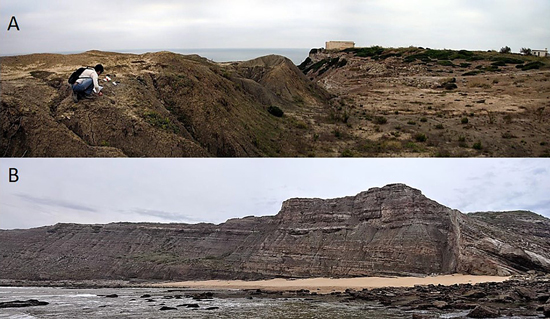
(A), location of Paimogo, Northern Lourinhã Formation, Praia da Amoreira-Porto Novo and Praia Azul Members. (B), location of Cambelas, Southern Lourinhã Formation, Assenta Member.
Picture credit: PLOS One


